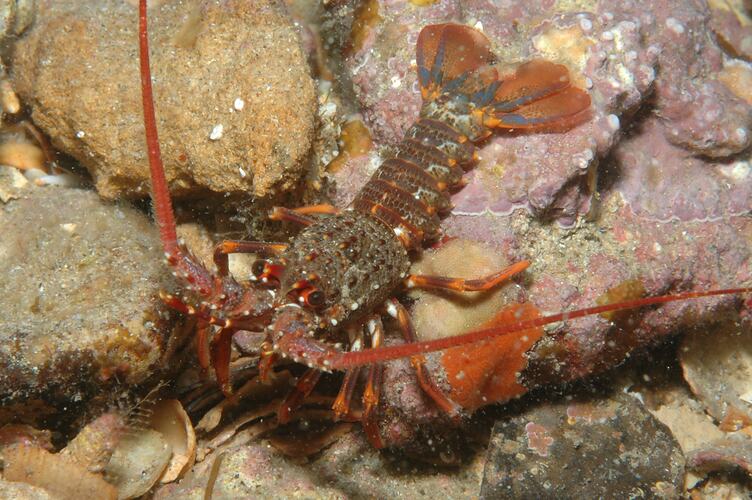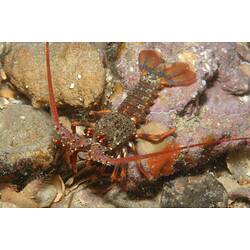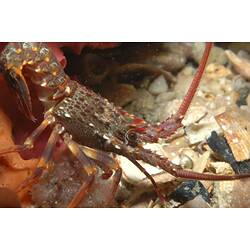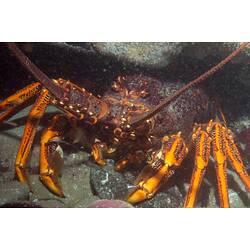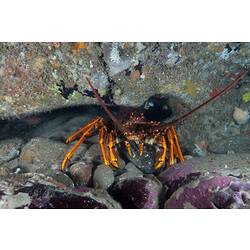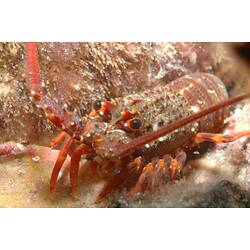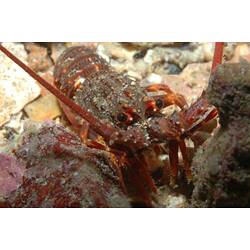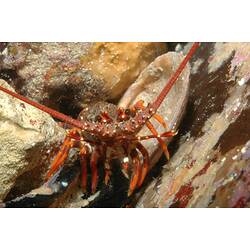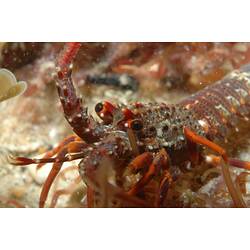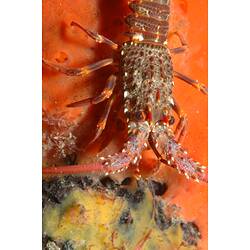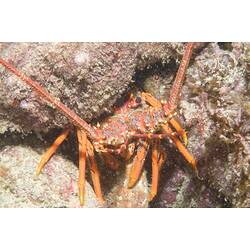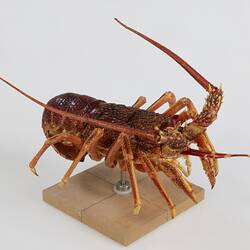General Description
Body red to red-brown with spines on the carapace. Abdomen with raised pattern. Up to 50 cm long (head to tail tip).
Biology
Female Southern Rock Lobsters carry their eggs on their limbs until they hatch. Eggs are usually laid from May to July and the larvae hatch from July to December. After they hatch the larvae float through the water for up to 24 months before settling on the sea floor and transforming into the adult body shape. Some individuals live over 20 years. They hide in rock crevices during the day and come out to feed at night on small invertebrates and sometimes algae. This species is the most common rock lobster in south-eastern Australia and is the species most commonly used by restaurants. They are fished commercially and recreationally. Although often called crayfish or sea crayfish they are not closely related to freshwater crayfish or yabbies. Rock lobsters can be distinguished from lobsters by their long, spiny antennae and their lack of large front claws.
Distribution
Southern Australia.
Habitat
Crevices and ledges of rocky reefs, to depths over 60 m.
More Information
-
Animal Type
-
Animal SubType
-
Brief Id
Rough pattern on abdomen.
-
Colours
Orange, Red, Brown
-
Maximum Size
50 cm
-
Habitats
-
Diet
Carnivore
-
Diet Categories
Animal matter
-
Endemicity
-
Commercial
Yes
-
Conservation Statuses
CITES: Not listed, FFG Threatened List: Not listed, EPBC Act 1999: Not listed, IUCN Red List: Least Concern
-
Depths
Deep ( > 30 m)
-
Water Column Locations
On or near seafloor
-
Taxon Name
-
Scientific Author
(Hutton, 1875)
-
Common Name
Southern Rock Lobster
-
Phylum
-
Subphylum
-
Superclass
-
Class
-
Subclass
-
Superorder
-
Order
-
Suborder
-
Infraorder
-
Family
-
Genus
-
Species Name
edwardsii
